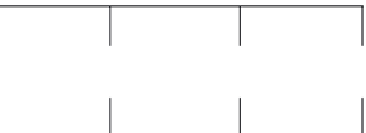Geoscience Reference
In-Depth Information
I
1
I
2
I
3
I
T
120 volts
R
1
15 ohms
R
2
15 ohms
R
3
12 ohms
FIGURE 11.44
Illustration for Example 11.36.
Now find total current using Equation 11.34:
I
T
=
I
1
+
I
2
+
I
3
I
T
= 8 + 8 + 10 = 26 amps
11.7.7.4 Parallel Circuits and Kirchhoff's Current Law
The division of current in a parallel network follows a definite pattern. This pattern is described by
Kirchhoff's current law
, which is stated as follows:
The algebraic sum of the currents entering and leaving any junction of conductors is equal to zero.
This can be stated mathematically as
I
a
+
I
b
+ … +
I
n
= 0
(11.35)
where
I
a
,
I
b
, …,
I
n
are the currents entering and leaving the junction. Currents entering the junction
are assumed to be positive, and currents leaving the junction are considered negative. When solving
a problem using Equation 11.35, the currents must be placed in the equation with the proper polarity.
■
EXAMPLE 11.37
Problem:
Solve for the value of
I
3
in Figure 11.45.
Solution:
First, give the currents the appropriate signs:
I
1
= +10 amps
I
2
= -3 amps
I
3
= ? amps
I
4
= -5 amps
Then, place these currents into Equation 11.35:
I
a
+
I
b
+ … +
I
n
= 0
with the proper signs as follows:
I
1
+
I
2
+
I
3
+
I
4
= 0
(+10) + (-3) + (
I
3
) + (-5) = 0
I
2
= 3 A
I
1
= 10 A
I
3
= ?
I
4
= 5 A
FIGURE 11.45
Illustration for Example 11.37.













Search WWH ::

Custom Search